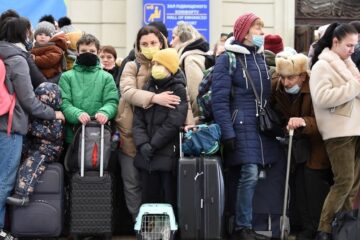Living in Bankside during my first year at LSE on the southern bank of the Thames meant often walking along some of London’s most iconic bridges, as the university campus is on the other side of the river. Whether it be the perpetual motion of traffic and people on Blackfriars, the smell of caramelised almonds amidst a chorus of cackling steel on Millennium, or the scenic views of Big Ben and Parliament offered by Westminster – the bridges of London often provide respite and tranquility to those who traverse them, in a city that is certainly lacking in such departments.
Yesterday’s tragic events began on Westminster Bridge when the still unnamed assailant drove his car on to the pavement and proceeded to speed through hordes of office workers, tourists and other unsuspecting people going about their lives. The pleasant day quickly darkened, and whatever respite those people on the bridge were experiencing quickly shattered. This being the day after, you most likely already know what transpired as the driver then crashed into a gate outside Parliament and went on to fatally stab a police officer. Five people, including the assailant, have been confirmed dead and 40 people are injured, some “catastrophically”.
After such events, there are more questions than can conceivably be answered. But the question that will undoubtedly dominate the discussion in the followings weeks and months is this: why was the attack not prevented? How was such a despicable act allowed to happen in one of the busiest and most fortified cross-sections in London?
Yesterday’s events mark the first major terrorist incident in London since the 7/7 bombings in 2005 when 52 people were killed and over 700 were injured. In the intervening years, UK security and intelligence chiefs have been preparing for a major attack that is intended not just to kill and hurt but also to have wider effects by stirring up fear and panic.
Having said that, the fact is that if a deranged psychopath wants to kill many people by ramming a car through pedestrians on a busy bridge in London and cause unconscionable pain and suffering, there is almost nothing we can do to prevent that from happening. Killing people by driving into them does not require extensive planning, preparation or partners – the three things which typically bring a terrorist plot to light.
Think about it next time you are in front of a wheel, how if you really wanted to kill the people around you, you could. A turn of the wheel, a foot on the gas pedal – it really is that simple. It is why the method has been endorsed and spread by terrorist groups like al-Qaeda and the Islamic State through their social media platforms and magazines. Bombs can be discovered ahead of time, but a deranged man can hardly be prevented from entering a car unless there is overwhelming evidence and intelligence indicating intent.
Some people might react to this fact in fear and trepidation: does this not mean that we can never prevent terrorist attacks like the one yesterday from occurring? The answer is yes, and yet this should not be a recognition rooted in fear. Rather, what yesterday’s tragedy should remind us of is that we live in a world where zero percent risk is a fantasy – it can never be achieved. No matter how prepared our police forces, how capable our intelligence services, how powerful our militaries, there will always be ways for evil to disrupt and maim our open societies.
Understanding this is important because we should not worry about the things we cannot change. That is not to say we should be complacent or stray from being anything but vigilant in how we carry out our daily lives. But being vigilant is different from being afraid. As the mayor Sadiq Khan rightly put it, for which he was criticised yesterday by the US President’s son living up to the family name, life in big cities like London brings with it immense opportunity, excitement and joy, but it also necessarily involves the risk of terror attacks.
The fact is that the success or failure of terror attacks like the one yesterday are largely determined by how we react and respond to them. Terrorism is both a means to an end and an end in itself – hence why terrorists typically target civilians in major cities in the light of day, so as to instil fear and panic in the wider public. Those who choose to appropriate the tragedy of yesterday’s attack to further their political agendas must be called out and resisted in the coming weeks and months, as their doing so plays right into the hands of terrorists who undoubtedly view their actions as legitimate expressions of their beliefs. Granting them what they want, which is the erosion of our commitments to our values and to fellow members of our societies, is to succumb to violence and to the threat of it. Though the sentiment is somewhat clichéd by now and perhaps lost its profundity in the process of being overused, its core imperative remains as important as ever before: we must carry on as normal. In doing so, we limit the effects of terrorism on our societies.
The only thing we have to fear is fear itself – words that ring loud and true on the day after. It is worth reminding ourselves that we live in one of the safest cities in one of the safest countries in a world that is safer than ever before. Though I am sure that my next walk across one of London’s many fantastic bridges will not feel the same as the many I have done before in light of yesterday’s events, what is certain is that with time, the feeling of angst will pass. Life must go on, and the city will too.


